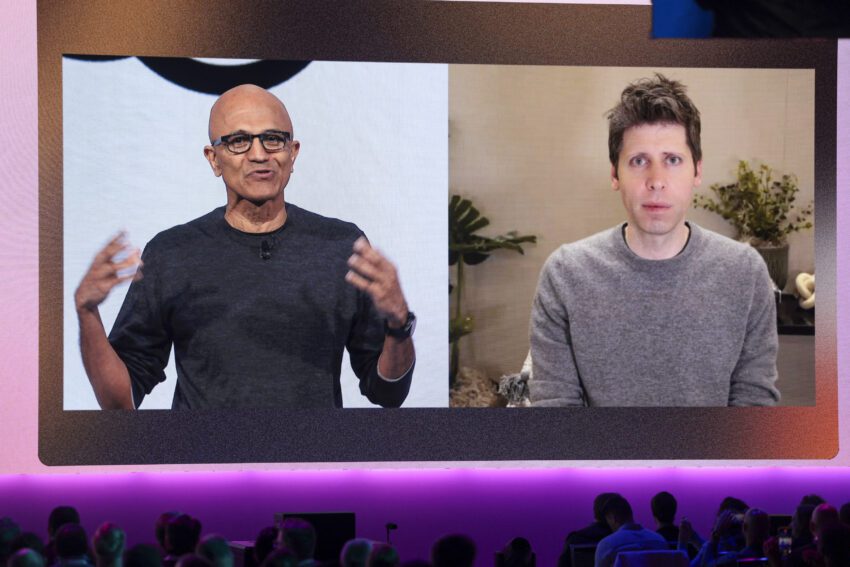
openai completed its for-profit restructuring – and OpenAI has finalized its controversial for-profit restructuring, which includes a significant new agreement with Microsoft, marking a pivotal moment in the evolution of artificial intelligence development.
openai completed its for-profit restructuring – and
OpenAI’s For-Profit Restructuring
OpenAI’s transformation into a for-profit entity has been a subject of intense scrutiny and debate. The company has now established its for-profit arm as a public benefit corporation, officially named OpenAI Group PBC. This restructuring allows OpenAI to pursue its ambitious goals while still adhering to a mission that prioritizes societal benefits. The nonprofit arm is now designated as the OpenAI Foundation, which holds equity in the for-profit entity, currently valued at approximately $130 billion.
The OpenAI Foundation will initially focus on a $25 billion initiative aimed at healthcare and disease management, as well as enhancing “AI resilience.” This strategic direction reflects OpenAI’s commitment to leveraging artificial intelligence for the greater good, addressing pressing global challenges through innovative technology.
Legal and Regulatory Challenges
The completion of this restructuring comes after more than a year of negotiations with the Attorneys General of California and Delaware. Their approval was crucial for OpenAI to move forward with its plans. Without this regulatory blessing, the company would have faced significant hurdles in its transition to a for-profit model.
Complicating matters further was a protracted legal battle with Elon Musk, who co-founded OpenAI in 2015 as a nonprofit research lab. Musk has been suing both OpenAI and its CEO, Sam Altman, in an effort to halt the conversion to a for-profit structure. This legal entanglement has raised questions about the governance and future direction of the organization, particularly concerning its foundational mission.
Ownership Structure and Control
OpenAI’s initial plan involved a complete transition to a for-profit model, which would have eliminated the nonprofit’s control over the company. However, the strategy has evolved. Under the new structure, the OpenAI Foundation will retain an equity stake of up to $100 billion and will continue to exercise oversight over the for-profit entity. This adjustment aims to balance the need for capital investment with the foundational mission of ensuring that AI technology benefits humanity.
One of the most contentious issues surrounding this restructuring is whether the nonprofit entity will maintain control over OpenAI’s underlying technology, particularly regarding the development of artificial general intelligence (AGI). AGI refers to systems that possess cognitive abilities equal to or surpassing those of humans. The pursuit of AGI has become a focal point for OpenAI and its competitors, leading to increased financial investment and workforce expansion in this area.
New Deal with Microsoft
As part of the restructuring, OpenAI has entered into a new agreement with Microsoft, which has altered the dynamics of their partnership. Previously, Microsoft held a 32.5 percent stake in OpenAI’s for-profit arm. Following the restructuring, this stake has been adjusted to approximately 27 percent on an “as-converted diluted basis,” which includes all owners. This new stake is valued at around $135 billion.
One of the critical changes in the OpenAI-Microsoft deal addresses a previously contentious issue: the “AGI clause.” Under the old agreement, Microsoft would lose its rights to OpenAI’s technology once AGI was declared. This clause raised concerns about the vagueness of the terms and the implications for Microsoft’s investment. The new deal clarifies this arrangement significantly.
Verification of AGI Declaration
Under the revised agreement, the declaration of AGI will no longer be solely at OpenAI’s discretion. Instead, it will be verified by an independent expert panel. This change aims to provide a more objective assessment of when AGI has been achieved, addressing concerns from Microsoft and other stakeholders about the potential risks associated with such a monumental milestone.
Intellectual Property Rights
Microsoft’s intellectual property rights have also been redefined in the new agreement. The tech giant will retain its rights to OpenAI’s models and products through 2032, which now includes models developed post-AGI, provided that appropriate safety measures are in place. This extension of rights is crucial for Microsoft as it seeks to leverage OpenAI’s advancements in AI technology.
However, there are limitations to these rights. Microsoft’s intellectual property rights to OpenAI’s research will only remain in effect until 2030 or until the expert panel verifies that AGI has been reached, whichever comes first. This stipulation ensures that Microsoft has access to critical information regarding the development of AI models and systems, but it also places a time constraint on their ability to utilize this information.
Revenue-Sharing and Financial Implications
The revenue-sharing agreement between OpenAI and Microsoft will remain in place until AGI is verified by the expert panel. However, payments will now be distributed over a longer period, reflecting the evolving nature of their partnership and the need for financial stability as both companies navigate the complexities of AI development.
Consumer Hardware and Collaboration Opportunities
In a notable departure from previous agreements, Microsoft’s intellectual property rights will not extend to OpenAI’s consumer hardware. This means that the proprietary technology behind the device being developed in collaboration with renowned Apple designer Jony Ive will remain off-limits to Microsoft. This decision highlights the importance of consumer hardware as a separate avenue for OpenAI’s innovation strategy.
Furthermore, the partnership has become less exclusive. OpenAI is now permitted to collaborate with third parties for product development and can release some open-weight models. This shift allows OpenAI to diversify its partnerships and expand its reach within the AI ecosystem, fostering innovation and collaboration across the industry.
Future Prospects and AGI Arms Race
Microsoft’s ability to independently pursue AGI, either alone or in partnership with third parties, has intensified the competitive landscape. The AGI arms race is now more pronounced than ever, with both Microsoft and OpenAI racing to achieve this transformative milestone. If Microsoft utilizes OpenAI’s intellectual property to develop AGI, the models will be subject to compute thresholds prior to the AGI declaration, ensuring that safety measures are in place during this critical development phase.
The urgency of this restructuring was underscored by the looming deadline for OpenAI to announce its completed transition by New Year’s Eve of this year. Failure to do so could have resulted in the loss of up to $10 billion in previously announced investments from SoftBank, further emphasizing the high stakes involved in this restructuring.
Community Engagement and Transparency
In a bid to foster transparency and community engagement, OpenAI has scheduled a livestream Q&A session featuring CEO Sam Altman and Chief Scientist Jakub Pachocki. This event will provide stakeholders and the public with an opportunity to gain insights into the restructuring process, the new partnership with Microsoft, and the future direction of the organization. OpenAI’s commitment to open dialogue reflects its understanding of the importance of maintaining trust and accountability as it navigates this new chapter.
Conclusion
The completion of OpenAI’s for-profit restructuring and its new agreement with Microsoft represent a significant turning point in the landscape of artificial intelligence. As both organizations move forward, the implications of this partnership will likely reverberate throughout the tech industry and beyond. The focus on AGI development, coupled with a commitment to ethical considerations and societal benefits, will shape the future of AI and its role in addressing global challenges.
Source: Original report
Was this helpful?
Last Modified: October 28, 2025 at 7:39 pm
3 views














